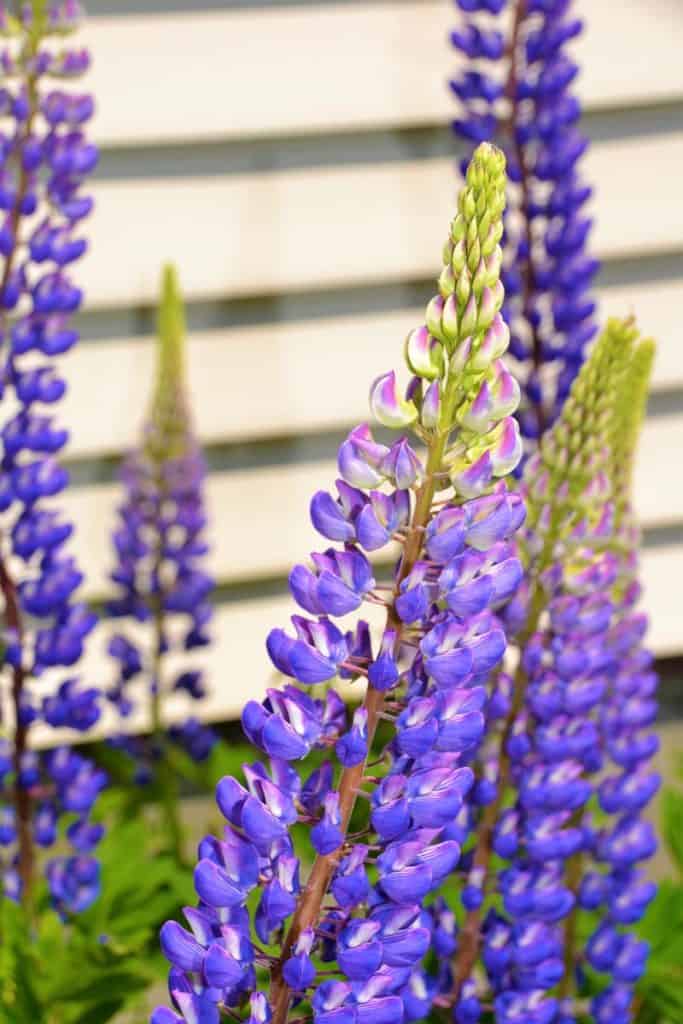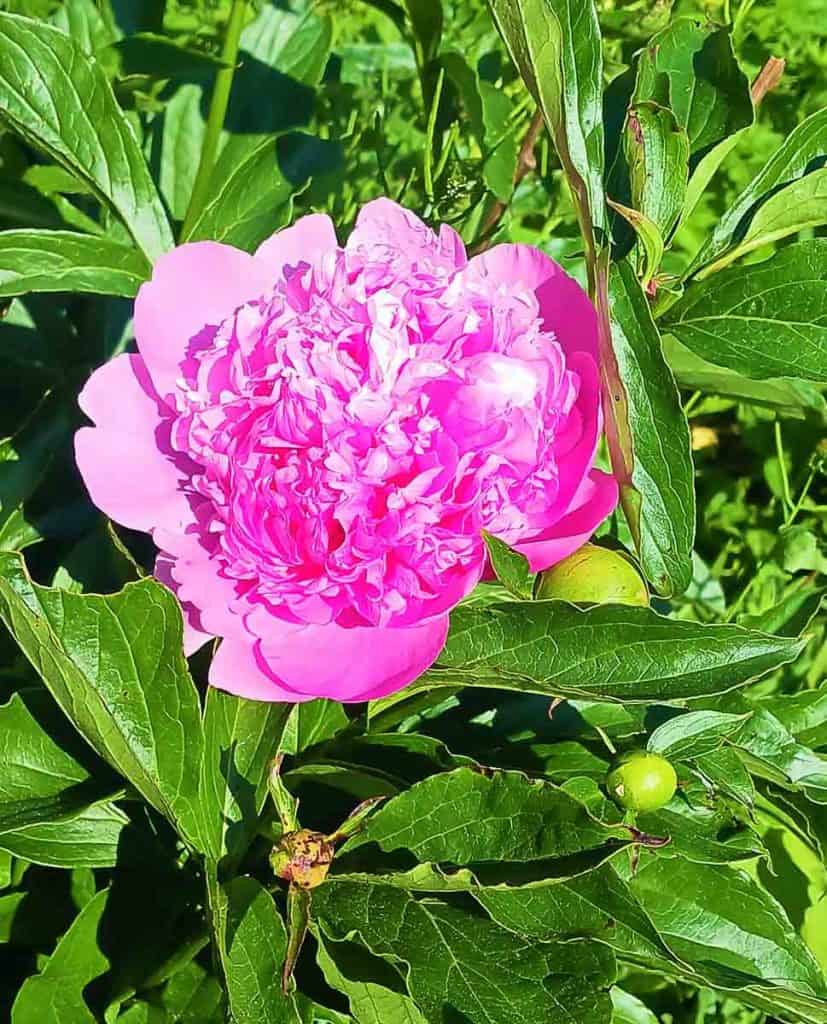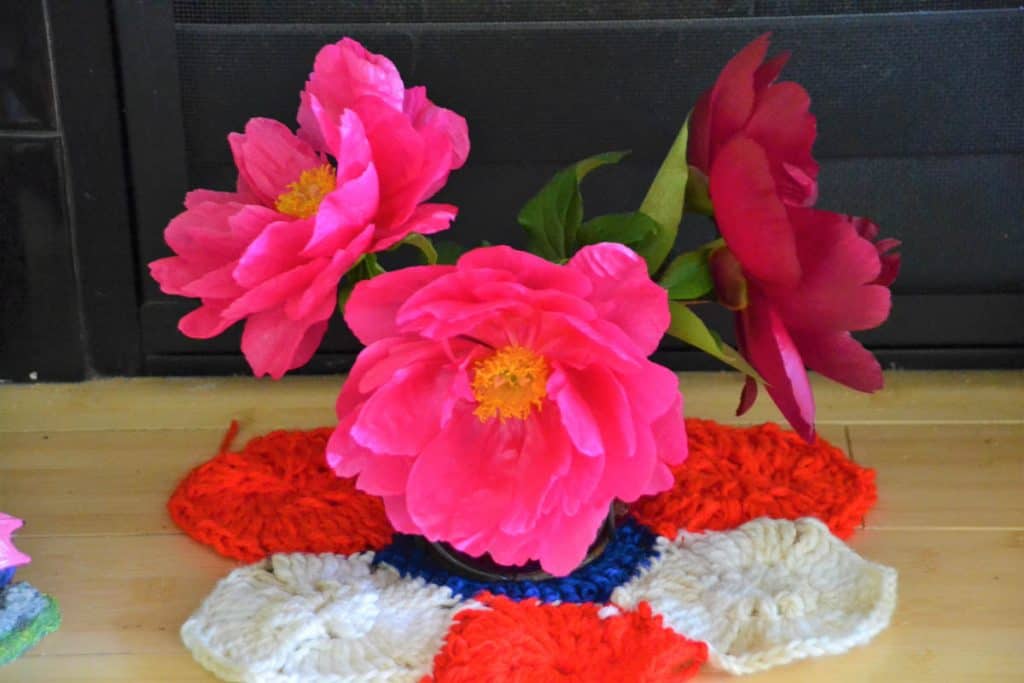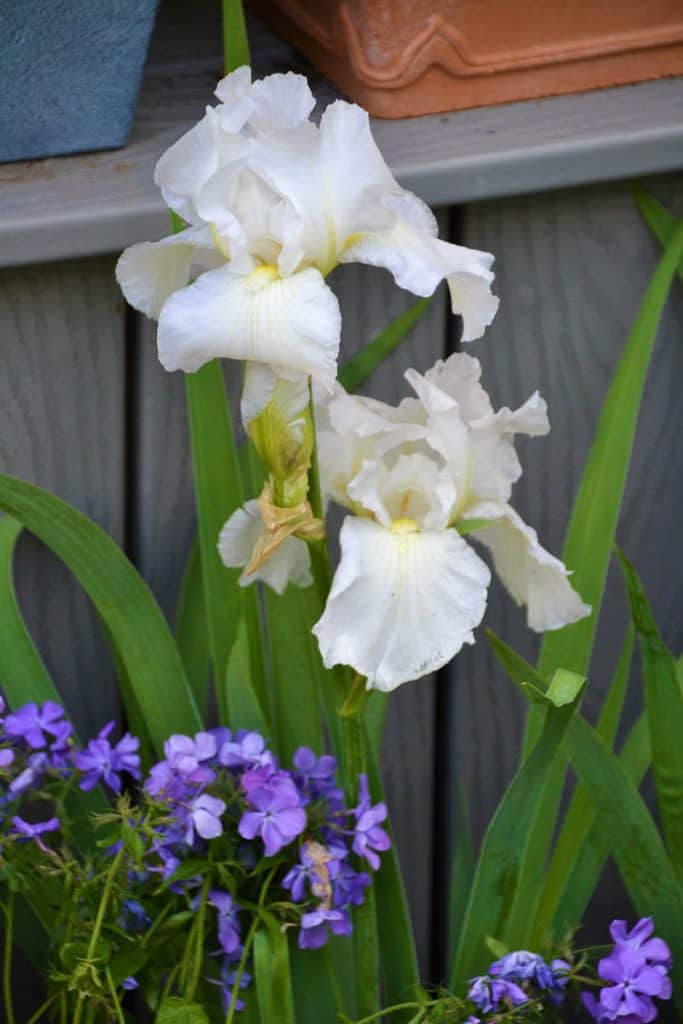Here’s what’s blooming in town this week to make your walks more enjoyable
June’s full moon, the Strawberry moon, will rise tomorrow, June 3. But it will look pretty close to full tonight. It’s a good reminder to make plans to attend the strawberry festival, which will be happening June 17! The Historical Society will be serving strawberry shortcakes in the Legion Hall on Taylor Street, and the Garden Club will be holding their annual plant sale on the adjacent Roby School lawn, along with several craft vendors.
While the spring blooms on many species were meager this year, many early summer flowers seem to be quite abundant. There is so much in bloom now it is hard to know which plants to mention. Peonies have become the most popular flower for wedding bouquets in recent years and are very popular, long-lived perennials in garden beds. Plants survive drought well, and once established can last many decades. Flowers may be single, which means they have five to 15 petals and open wide to show the yellow stamens and pistils in the center, semi-double, which means they have more than five petals and are cup-shaped but still have a visible center, and fully double, which means there is no visible center or it is hidden by multiple petals even when the flowers are open. Janet Kierstead, an artist and former art teacher in the Saugus Public Schools, is very pleased with this year’s blossoms on her double pink peony. The peonies pictured above are different varieties of common garden peonies (Paeonia lactiflora), but there are hybrids and other peony species that are also available and that can extend the peony blooming season. Common peonies prefer a sunny spot to produce the most blossoms.
Also blooming now are several species of iris. They are the emblem of the Saugus Garden Club. The two iris species most commonly seen this week in gardens are bearded iris (Iris germanica and Iris pallida hybrids) and Siberian iris (Iris sibirica). One way they can be told apart while in bloom is that bearded irises have a fuzzy looking nectar guide at the top of the falls, while Siberian iris don’t.
Foliage can also be a useful tool to tell them apart even when they are not blooming, since bearded irises have wide, usually light green leaves, while Siberians have narrower, medium green leaves that look somewhat like grasses. Some varieties of bearded iris, like the white ‘Immortality’ pictured above, will rebloom in the fall once established.
The late May/early June bloom is very reliable, but the fall bloom can be encouraged by fertilizing in summer. Bearded irises are very drought tolerant perennials due to the starchy rhizome at the base which can store moisture and nutrients.
A showy perennial that can sometimes be seen in meadows in colder parts of the United States and in southern Canada is the large leaved lupine (Lupinus polyphyllus) – introduced to much of the world from its original range in western United States and Canada. A member of the pea family, its individual blossoms are arranged on a tall spike. The spectacular plant blooming in Arlene and Gene Decareau’s garden has about 25 individual flower spikes on it now, and a few more are developing. They brought it home from Nova Scotia at least 10 years ago, and this is the first time it’s bloomed! They had given up on it, but this year when so many other plants in our area are suffering from last year’s drought, it has put on a spectacular show. Some evidence indicates that this lupine species may benefit from fires and other disturbances, and high heat can encourage seeds to start germinating – a possible explanation for the sudden appearance of the plant in the Decareaus’ garden after having no sign of it for so long after planting.
It would be a serious omission to talk about lupines without mentioning a children’s book by Barbara Cooney, “Miss Rumphius.” Published in 1982, it has won numerous awards and is very popular with teachers and children alike. The fictional Miss Rumphius, loosely based on a real woman who lived in Maine, lived a fulfilling life and in old age planted lupines as her way of making the world more beautiful. Sugar Hill, N.H., is one place in New England where fields of lupines in bloom are a well-known tourist attraction, and there are many towns in Maine and, apparently, Nova Scotia as well, where these flowers are abundant in rural places. This lupine species is not actually native to the East Coast; however, and these meadows full of flowers are places where the introductions have naturalized.
The locally native lupine species, sundial lupine (Lupinus perennis), is much smaller and less dramatic; however, it is an important host to certain butterfly species. This species has become quite scarce in New England and may now be completely gone in Maine, where it once flourished. Not surprisingly, they are seldom available in nurseries.
Editor’s Note: Laura Eisener is a landscape design consultant who helps homeowners with landscape design, plant selection and placement of trees and shrubs, as well as perennials. She is a member of the Saugus Garden Club and offered to write a series of articles about “what’s blooming in town” shortly after the outbreak of the COVID-19 pandemic. She was inspired after seeing so many people taking up walking.







